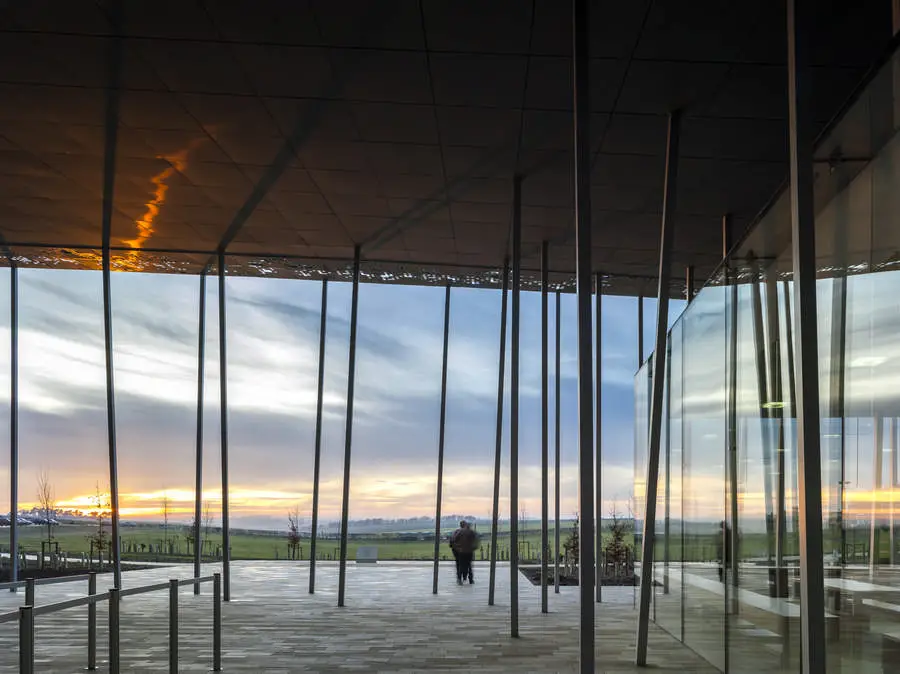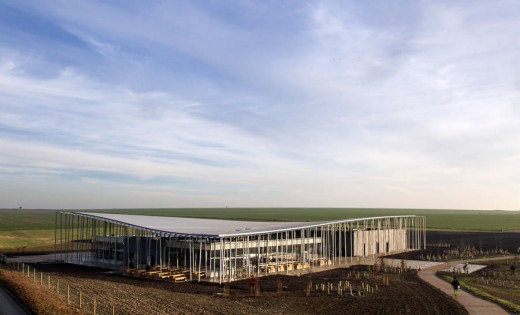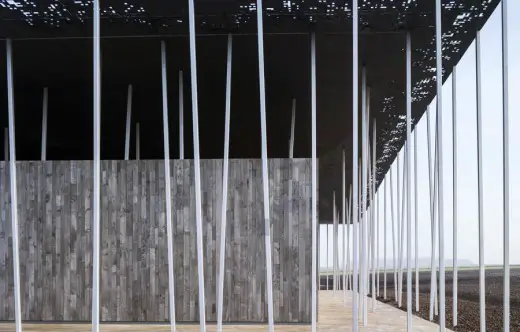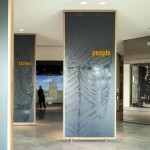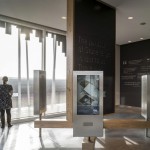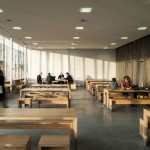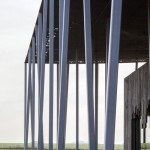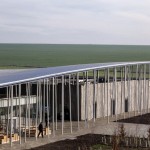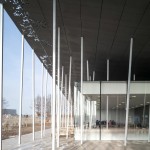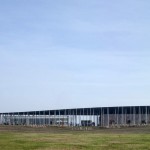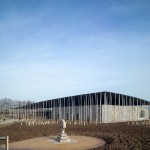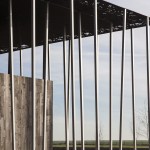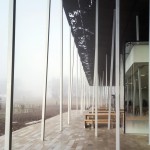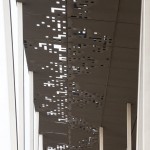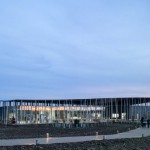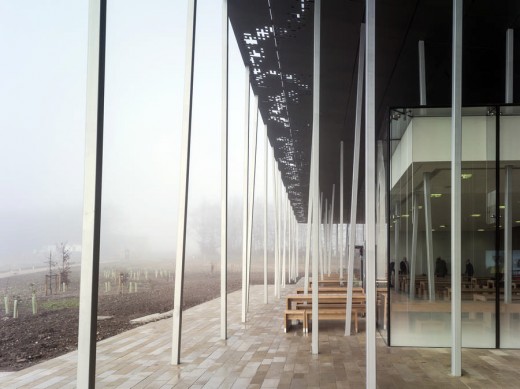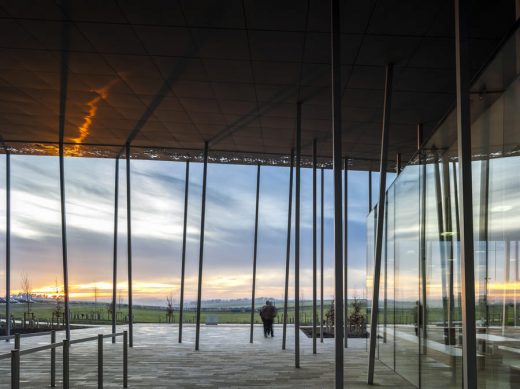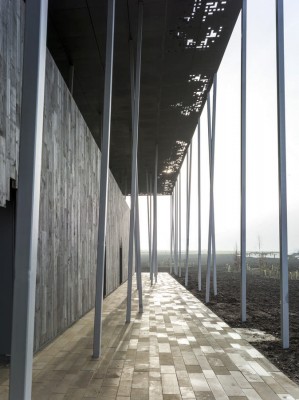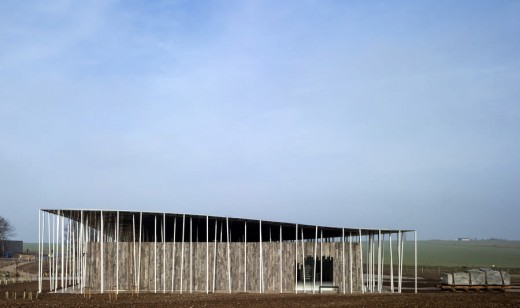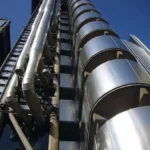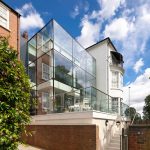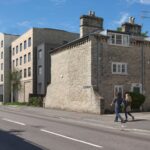Stonehenge Visitor Centre Building, English Heritage Facilities, Wiltshire architecture design project news
Stonehenge Visitor Centre Building
English Heritage Development, UK design by Denton Corker Marshall architects
14 Aug 2016
Stonehenge Exhibition and Visitor Centre by DCM is an International Architecture Awards Winner in 2016
International Architecture Awards 2016
17 Dec 2013
New Visitor Centre Building at Stonehenge
New Stonehenge Visitor Centre Opens
17th December 2013 – Denton Corker Marshall’s new Stonehenge Visitor Centre opens its doors on 18th December, inviting more than one million visitors every year to experience the transformed ancient site.
Located 1.5 miles to the west of the stone circle at Airman’s Corner, just within the World Heritage Site but out of sight of the monument, the new visitor centre is designed with a light touch on the landscape – a low key building sensitive to its environment.
Sited within the rolling landforms of Salisbury Plain, the design consists of a subtle group of simple enclosures resting on a limestone platform, all sheltered by a fine, perforated, undulating canopy.
Barrie Marshall, director at Denton Corker Marshall, said: “The design of the centre is based on the idea that it is a prelude to the Stones, and its architectural form and character should in no way diminish their visual impact, sense of timeless strength and powerful sculptural composition.
Where the Stones are exposed, massive and purposefully positioned, the centre is sheltered, lightweight and informal. And where the Stones seem embedded into the earth, the centr rests on its surface.”
Three pods, finished in different materials, provide the principal accommodation. The largest, clad in sweet chestnut timber, houses the museum displays and service facilities. The second largest, clad in glass, houses the educational base, a stylish café and retail facilities. Located between these is the third, by far the smallest and clad in zinc, which provides ticketing and guide facilities.
Oversailing them all, and resting on 211 irregularly placed sloping columns, is a steel canopy clad on the underside with zinc metal panels and shaped with a complex geometry reflecting the local landforms.
Local, recyclable and renewable materials have been used wherever possible. The material palette includes locally grown sweet chestnut timber cladding and Salisbury limestone. Stephen Quinlan, partner at Denton Corker Marshall, said: “Various strategies have been adopted in the design to ensure that the centre is environmentally sensitive and uses natural resources in a responsible way.
These range from the natural sun shading qualities of the canopy which promotes natural ventilation and reduces the need for cooling in the pods, through to more technical solutions such as heat pumps and high efficiency insulation.”
The new building allows Stonehenge to have dedicated facilities on site for education and interpretation for the first time, with museum-quality exhibits that tell the story of the 5,000 year-old monument.
From the new centre, visitors can either walk to the monument or take a ten-minute shuttle ride. During the trip the henge emerges slowly over the horizon to the East.
Dr Simon Thurley, chief executive of English Heritage, said: “For too long, people’s appreciation of Stonehenge is this mysterious, impressive but anonymous monument. The Neolithic period itself is pretty much a murky expanse of time, shrouded by many outdated notions. We want people to come here and take away a fresh view.“
There will also be an outdoor gallery including the reconstruction of three early Neolithic houses, based on rare forensic evidence found near Stonehenge. These houses will be built by skilled volunteers and are due to be complete by Easter 2014.
Sustainable Design
The building is sensitively designed to sit lightly in the landscape. Reversibility – the ability to return the site to its current state – was a fundamental design concept. The building will last as long as it needs to but could, if necessary, be removed leaving little permanent impact on the landscape.
This is achieved by constructing it on a concrete raft which in turn sits on an area of ‘fill’ with minimal cutting into the soil. The modern construction, using slender steel columns and lightweight framed walls, and semi-external spaces allow the depth of foundations to be minimised.
Other green features include:
– An open loop ground source heating system that pumps underground water through a unit to extract/inject heat energy. This enables the building to be heated and provides some cooling without the need for fossil fuels.
– Fully insulated cavity walls – the timber pod is constructed of structurally insulated panels (SIPS), which enables efficiencies in construction whilst minimising material waste and ensuring the building is well insulated.
– Mixed mode ventilation – the building will be naturally ventilated whenever external conditions allow, switching to an efficient mechanical ventilation system that enables the heat energy in the exhaust air to be ‘recovered’ and transferred to the supply air, thereby reducing the load on the heating plant and saving energy.
– “Grey water”, including rainwater collected from the roof of the building, will be used for the bulk of water required at the visitor centre, e.g. for flushing toilets. Other water – e.g. for drinking – will be drawn from the aquifer, a local and renewable resource.
– The facilities will use on-site water treatment for sustainability and to avoid intrusive trenching for connections to water and sewer mains.
About Denton Corker Marshall
Denton Corker Marshall is a design practice with offices in the United Kingdom, Indonesia and Australia. With numerous architectural awards and competition successes the practice has made, and continues to make, an acknowledged contribution to the international architectural design scene.
In the United Kingdom our best known completed work is the Manchester Civil Justice Centre, which was shortlisted for the prestigious Stirling Prize in 2008. Current projects include the new Liverpool Exhibition Centre and Hotel which is planned to start on site early in 2014.
Background story to the new Stonehenge Visitor Centre
Since the 1980s English Heritage has examined ways to remove the impact of surrounding roads on the monument and replace the existing out dated facilities.
These plans included a formal application in 1991 by English Heritage and The National Trust for Outline Planning Permission for a new visitor centre at Larkhill within the World Heritage Site. The application was refused by Salisbury District Council. In the context of this decision, English Heritage began to search for other potential visitor centre sites. This led to the identification of Countess East as a potential site following a major public consultation exercise undertaken during 1992-3. A planning application for the development of new visitor facilities for Stonehenge at Countess East (to a design by Denton Corker Marshall) was submitted to Salisbury District Council in August 2004, and planning permission was granted by the Secretary of State for Communities and Local Government in March 2007 following a public inquiry.
In parallel with this, the Highways Agency had been developing proposals for road improvements at Stonehenge, including the closure of the A344 and a 2.1km tunnel to remove the A303 from within sight of the Stones. However, in December 2007, the Government announced that, while there were no acceptable alternatives to the A303 tunnel scheme, the cost would not represent best use of taxpayers’ money. As a result, the visitor centre could not go ahead, since planning permission was conditional on approval for the tunnel scheme.
In light of the decision on the A303 tunnel, the Government made a commitment in December 2007 to work with stakeholders to review the Management Plan as the overarching strategic document for the site and to consider alternative options for new visitor facilities.
Following a comprehensive site options appraisal and public consultation exercise in 2008, the Government announced in May 2009 that the visitor facilities for Stonehenge would be relocated to a new centre away from the Stones at Airman’s Corner. The plans envisaged the partial closure of the A344 and the removal of the road closest to the monument.
Stonehenge Visitor Facilities images / information from Denton Corker Marshall
Location:Stonehenge, England
Stonehenge Visitor Centre – Background
Close up of the new proposed Stonehenge Visitor Centre – computer-generated image
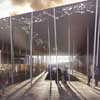
Stonehenge Visitor Centre image from architects
Stonehenge Visitor Facilities
Comments / photos for the Stonehenge Visitor Centre Building England Architecture page welcome
Stonehenge Visitor Centre Building
Website: www.english-heritage.org.uk/daysout/properties/stonehenge

